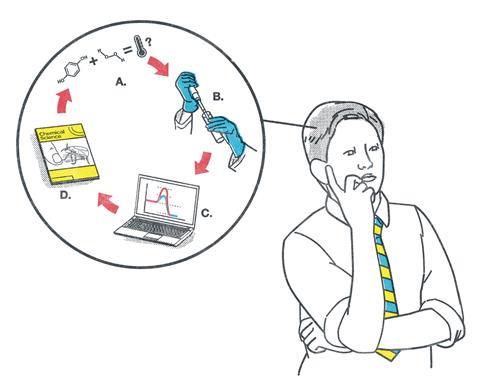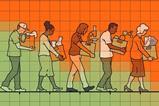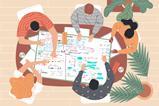Appreciating the importance of scientific process will help your students improve their practical work

Teaching students the importance of good scientific process is an essential part of skills learning. Practical work underpins four of the seven elements the Education Endowment Foundation recommends to improve secondary science. The use of purposeful practical work as part of a learning sequence helps students to self-direct their learning, build on ideas and retain knowledge.
However, exam questions on planning investigations are often poorly answered. They come in different forms with different challenges:
- Questions asking for a method: students omit the names of equipment being used and quantities. They rarely use diagrams to convey ideas or include control of variables and repeating to obtain reliable data.
- Questions with a skeleton method: students often write down memorised explanations. They often don’t refer to the data provided and don’t respond to clues given.
- Questions with errors or omissions in the method: students find it easier to identify the errors but find suggestions for improvement more challenging.
Teaching students scientific process and how to plan their own investigations should not be a bolt-on at the end of a topic. To instil a sense of discovery, use it as an introduction to a topic. This will provide more opportunities for reinforcement and application later on. Encourage students to make connections with the transferable skills that underpin the scientific method, for example the need to control variables, selecting equipment, range and presentation of data.
I have three approaches to helping students understand the scientific process and its importance in how they plan for an investigation. Together, they give students a fuller understanding, so it is important they experience all of them.
-

Download this
Slides, worksheet and lesson plan, for age range 11–14
Use this activity to help your learners to distinguish between observation and inference, key to unlocking the scientific process.
Download the slides as MS Powerpoint or pdf, student worksheet as MS Word or pdf and teacher guidance as MS Word or pdf.
Download this
Slides, worksheet and lesson plan, for age range 11–14
Use this activity to help your learners to distinguish between observation and inference, key to unlocking the scientific process.
Download from the Education in Chemistry website: rsc.li/3JVWZOx
Good scientific process
Introduction: I look for conclusions that have been drawn from current research. These do not need to be scientific. For example, take a headline such as ‘63% of students do not like school’. Discuss how this number was arrived at. This will tease out ideas about sample size, reliability of data, age group etc.
This will help students understand how the scientific process is relevant, highlighting the importance of collaborative work.
Fundamentals: Start with a question that generates discussion. Concept cartoons are a great way to introduce the hypothesis being investigated and can be adapted for any age group. Put up some data with questions on how the data was obtained. Ask students to draw the set-up of the investigation.
Give students chalk pens to write on their tables to encourage collaborative brainstorming. Then get groups to move around and look at what others have come up with, asking them to suggest improvements. These activities help demonstrate the importance of connecting experimental work to sound scientific practice before actually carrying out practical work.
Exploration: Give students a tray of equipment and ask them to come up with ways to investigate a chemical concept.
Investigating the change in pH when a solid base is added to an acid is a good example. Questions that will support this learning include: what will you use to measure the volume of the acid? How much of the solid base will you add? What will you measure? How will you record your findings?
Recommended resources and reading
- Find ideas to help students grasp the evolving nature of science in this article with an investigation activity.
- Help your learners to understand the challenge of accuracy in investigations with these measurement, accuracy and precision worksheets.
- Use the story, Scurvy – the mystery disease to investigate the scientific method, and show pupils how science was done in the past.
- Introduce your learners to some of the ways scientists are changing lives through their investigations with this set of video job profiles.
- Find ideas to help students grasp the evolving nature of science, in this article with an investigation activity: rsc.li/3FCEjRo
- Help your learners to understand the challenge of accuracy in investigations with these measurement, accuracy and precision worksheets: rsc.li/3JSPR5A
- Use the story, Scurvy – the mystery disease to investigate the scientific method, and show pupils how science was done in the past: rsc.li/3lntxY8
- Introduce your learners to some of the ways scientists are changing lives through their investigations with this set of video job profiles: rsc.li/3ZXEpLy
Consolidate the learning
To consolidate the key learning points, show a video of a similar practical to help students make improvements to their plans. Ask them to write up their plans and reflect on the adjustments they needed to make and why.
Give learners examples of plans with deliberate mistakes to correct or key steps with details missing. Ask them to suggest improvements. This will help you check for understanding and further consolidate the learning.
Looking at how scientists work and giving real-life examples of how conclusions are drawn from investigations, not just in science, will help students see how similar skills are applied outside the subject. Take the opportunity to work across a range of subjects. For example, how do geographers carry out population research?
It is useful to agree a template that can be used across the sciences to encourage students to view investigations as transferable skills. Having a structure with the key elements that underpin an investigation helps to develop routines and scaffolds the learning.

This article is part of our Teaching science skills series, bringing together strategies and classroom activities to help your learners develop essential scientific skills, from literacy to risk assessment and more.














1 Reader's comment